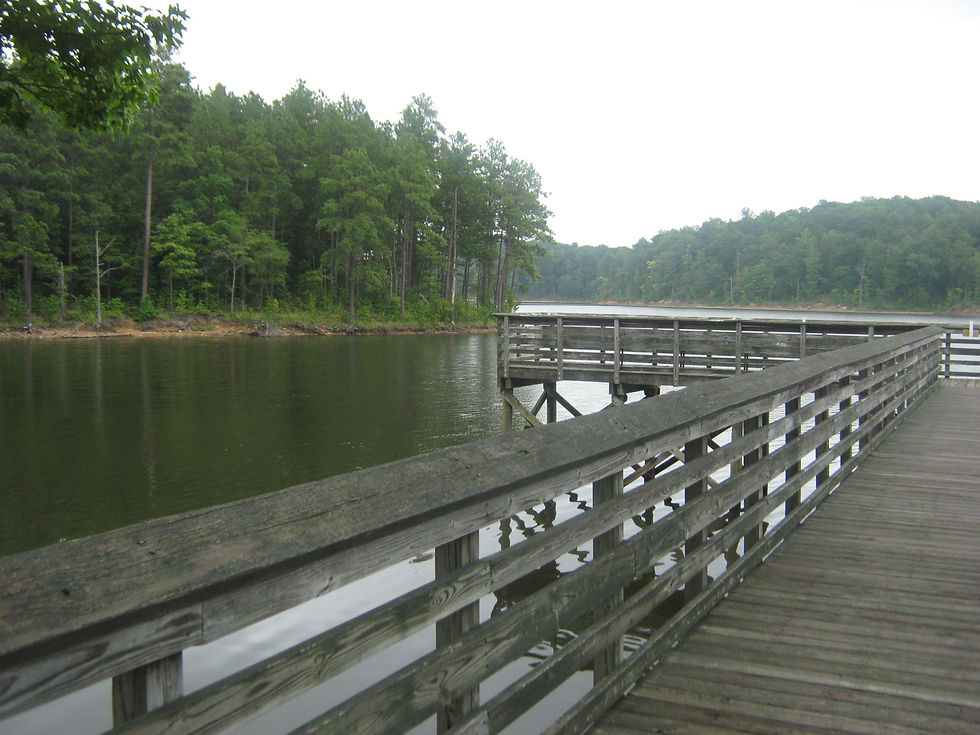Nestled amidst the rolling hills and dense woodlands of North Carolina, Falls Lake stands as a testament to the state's natural beauty and ecological diversity. Located just north of Raleigh, Falls Lake is a vital reservoir that not only serves as a source of drinking water and flood control but also boasts a rich and diverse ecosystem. From its lush forests to the thriving aquatic life within its waters, Falls Lake's ecology offers an intriguing window into the natural world of North Carolina.

Falls Lake, created by the Falls Lake Dam on the Neuse River, is a sprawling 12,410-acre reservoir. With over 250 miles of shoreline, it's a cherished recreational area for both residents and visitors. Its sheer size and proximity to urban centers make it a remarkable place to study and appreciate the interplay of various ecosystems.
Lush Forests and Biodiversity

The forests surrounding Falls Lake are a mesmerizing tapestry of deciduous and evergreen trees, making it a haven for wildlife. In the hardwood forests, species like oak, hickory, and maple dominate, offering essential habitats for squirrels, deer, and a variety of bird species, including the enchanting Eastern Bluebird and the elusive Scarlet Tanager.
Within the piney woods, you'll find longleaf pines and loblolly pines. These trees provide homes for the endangered Red-cockaded Woodpecker and the Eastern Box Turtle. In fact, Falls Lake is home to several federally protected species, emphasizing the ecological importance of the area.
Aquatic Ecosystem
Falls Lake is not just about the land; its aquatic ecosystem is equally captivating. The lake teems with various fish species, including largemouth bass, catfish, and crappie, making it a popular fishing destination. These fish, in turn, support other wildlife, such as bald eagles and ospreys that can be seen diving into the water for their next meal.
The lake's water quality is vital for the survival of these aquatic species. The U.S. Army Corps of Engineers, along with other organizations and agencies, consistently monitor and maintain water quality, ensuring that it remains a sustainable habitat for aquatic life and a reliable source of drinking water.
Wetlands and Bird Sanctuaries

The wetlands around Falls Lake are vital for water purification, flood control, and wildlife habitat. These areas are home to various species of amphibians and reptiles, including the American alligator and the endangered eastern spadefoot toad. Additionally, wetlands provide a critical stopover for migratory birds, making Falls Lake a prime location for birdwatching.
Conservation Efforts
The protection and preservation of Falls Lake's ecology are top priorities. Various agencies, including the North Carolina Wildlife Resources Commission and the U.S. Army Corps of Engineers, work tirelessly to ensure that the natural beauty and diversity of this area are safeguarded for generations to come.
Efforts to control invasive species, such as the hydrilla plant, and reduce pollution from urban runoff have been instrumental in maintaining the integrity of the lake's ecosystem. These efforts, along with public awareness and participation, play a crucial role in conserving Falls Lake's precious ecology.
Falls Lake, North Carolina, offers a diverse and intricate ecosystem that showcases the natural beauty of the region. From its lush forests and vibrant wetlands to its thriving aquatic life, the lake is a testament to the importance of preserving and protecting our natural resources. By understanding and appreciating the delicate balance of life within Falls Lake, we can ensure its continued ecological health and the enjoyment of its recreational opportunities for generations to come.

Comments